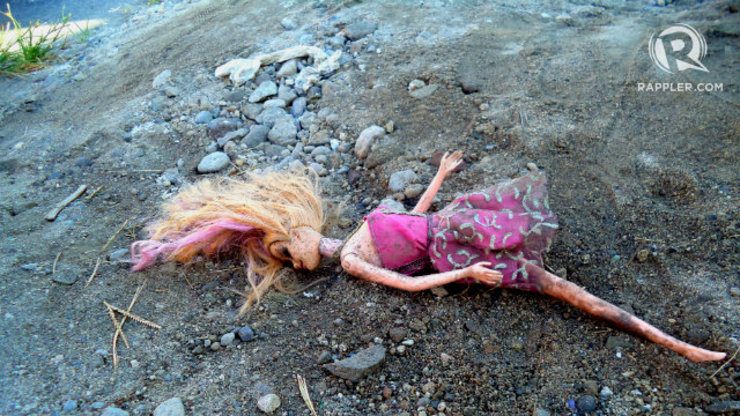SUMMARY
This is AI generated summarization, which may have errors. For context, always refer to the full article.

TACLOBAN, Philippines – Kids, kids, kids.
Nothing beats a child’s imagination, not even a super typhoon like Yolanda (Haiyan).
These are images of how the children of Tacloban, Leyte and Gen McArthur, Eastern Samar spend their afternoons. Some are playing after school, some are playing instead of attending school.
Many families across Eastern Visayas lost homes, livelihoods, and loved ones. Children lost their schools, playgrounds, and toys. And even teachers and playmates.
Some toys survived the storm, but their owners did not. Others came out of the storm with absolutely nothing.
A year after Yolanda, some of these children are back to school – whether or not their classrooms have been repaired. With their playgrounds gone, anywhere becomes a space for play: construction sites, ruins, empty lots, streets, tents, and even hospital beds.
Some are back to eating right, others are eating less. The neighborhood sari-sari store remains a favorite one-stop shop for their favorite snacks. Some kids help their parents tend vegetable gardens, using recycled water bottles and milk cans. The plots are everywhere; behind bunkhouses, or beside makeshift homes within no-build zones.
Basketball. Basketball everywhere. In place of courts are crooked metal rings nailed onto wooden boards.
Some children have stopped working, with their coconut trees and fishing boats gone. Others are still bound by child labor arrangements. Boys living in tents with their families, only a few meters away from the sea, are scavenging for scrap metal.
A boy who borrowed his father’s hammer passes it along to his friends. They pound on debris and other leftovers from what was once their schools or neighbor’s homes, meticulously collecting bits and pieces of metal. Rust or no rust, it sells.
The boys make P40 per day selling their finds.
Rubber bands are popular among kids in many barangays, not only as bracelets but also as toys. The rubber bands are stocked in a pile, the players must then scatter the rubber bands by hitting the ground with their clasped hands. To make it more exciting, the kids turn it into a race. The faster you put down a pile, the better. The winner sometimes gets to collect the rubber bands.
In place of toy cars are bottles, with caps for wheels and a long string for an engine. Traditional children’s games are revived such as spider fights using barbecue sticks, hopscotch, hoop rolling, tumbang preso, and tag.
Small children play house, using scrap wood and tarpaulins. They catch birds and keep them as pets. Dogs, cats, and chicken also remain loyal to their owners.
Some children have access to an iPad or cellphones, others go to Internet shops to play games or use Facebook. Some homes also have satellite television.
A year after Yolanda, a lot of things await these children. Maybe some of them will grow up to leave their beaten up barangays, maybe others will grow old in the same purok they were born in. Some may witness their barangays recovering fast, others might have to wait a bit longer.
A year after Yolanda, a lot is yet to be done. Adults are busy rebuilding homes, businesses, and cities. Meanwhile, the kids, too, are busy rebuilding their own worlds, temporarily disrupted by the super typhoon. – Rappler.com
For Rappler’s full coverage of the 1st anniversary of Super Typhoon Yolanda (Haiyan), go to this page.
Add a comment
How does this make you feel?
There are no comments yet. Add your comment to start the conversation.